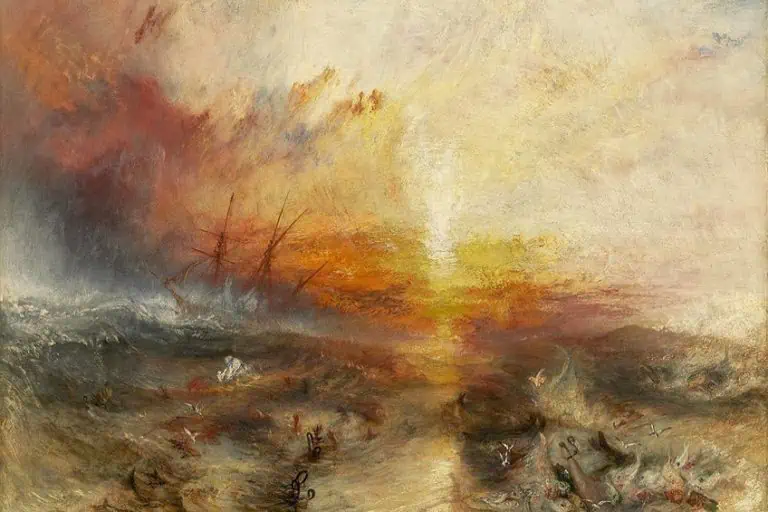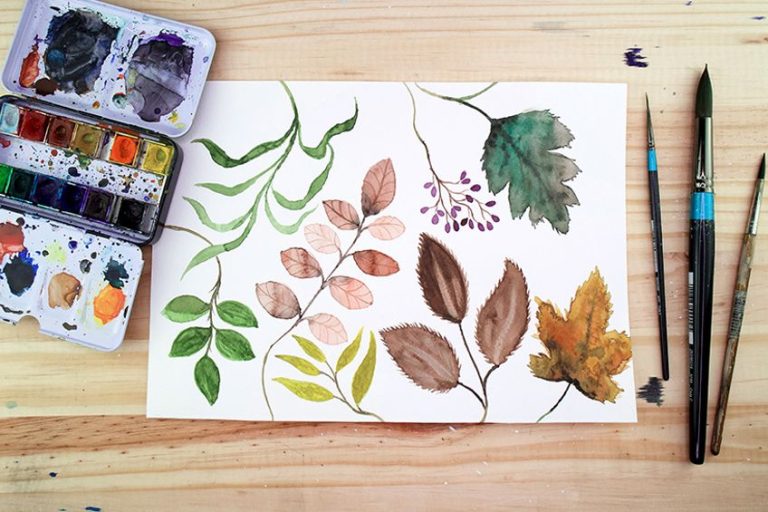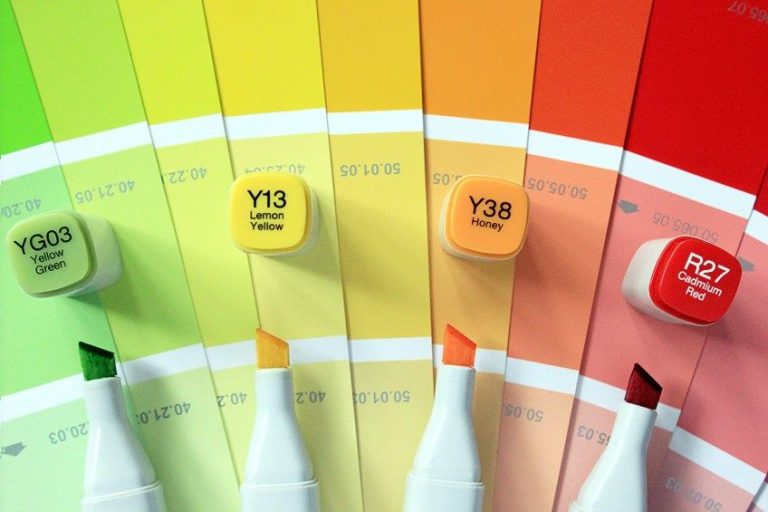Best Paper for Oil Pastels – What Paperss do Work?
This post may contain affiliate links. We may earn a small commission from purchases made through them, at no additional cost to you.
Oil pastels are an immensely popular artistic medium, and for good reason. The pastel medium comes in different forms for different kinds of artists to enjoy and love, with chalk and crayon forms being two of the most popular. However, you can also get pastels in other formats for different finishes. The foundation you use to create is important too since this medium is not water-based like watercolor or acrylic paints. Knowing the best paper for oil pastels is the key to presenting a stunning finish with your artwork.
Table of Contents
Oil Pastels: Where Do They Originate From?
Before we get into the best papers to use for your oil pastel creations, let’s discuss what oil pastels entail and how they were first created. Oil pastels were first invented in 1925 by Sakura, a Japanese manufacturing company that creates stationary and other artistic mediums. Oil pastels were called Cray-Pas under Sakura when they were first created. This invention was a medium that consisted of oil, pigment, and wax to create a crayon-type product for those on all levels of artistic experience.
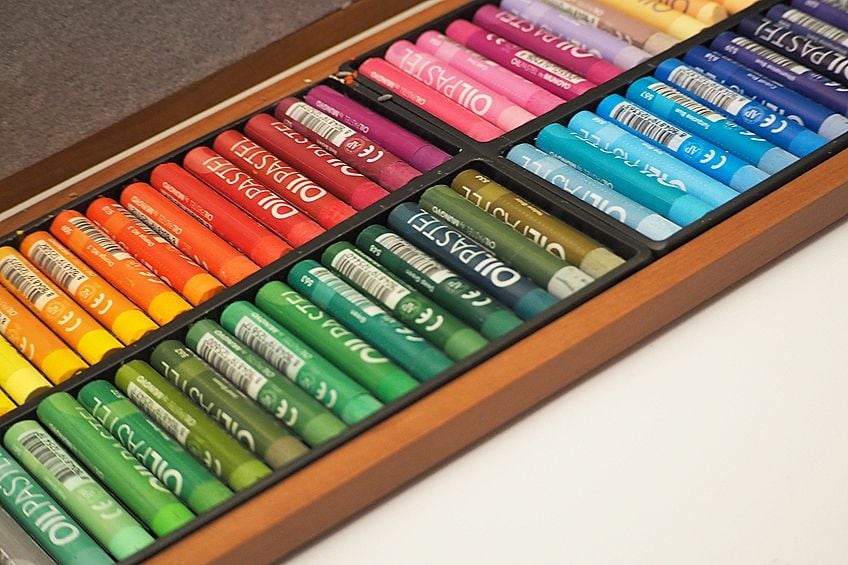
The original oil pastels were designed to be as affordable as possible so that artists of all ages and incomes have easy access to these mediums, without having to break the bank in the process. Oil pastels were also specially designed to be an easy artistic medium to engage with so that you as an art enthusiast don’t need to have extensive experience or knowledge of fancy methods to be able to create a truly stunning masterpiece. Since its inception, oil pastels have become a widely loved medium around the world for art enthusiasts and more established artists.
From the early concept of pastels to its more recent development of oil and pencils, renowned artists including Pablo Picasso, Odilon Redon, Mary Cassatt, Vincent van Gogh, Claude Monet, Edgar Degas, and Leonardo da Vinci all created memorable artworks through the pastel medium.
Various Pastel Mediums
Although oil pastels, in particular, were invented in 1925, pastels as a concept have been around for much longer, in a different form. Records of the pastel medium date back as early as the 16th century in the Northern part of Italy. The original medium was a chalk consistency with ingredients such as pigmented powders, animal/fish glue, and gum arabic to create the medium.
The colors of pastels were severely limited back then, offering only white, black, and red as your options to create art. Thanks to the modernization of the concept, there are hundreds of shades to use today, giving you much more leeway in what you can create. In modern times, there are more variations of classic pastels which have been developed; with the five types being oil pastels, soft pastels, hard pastels, pencil pastels, and PanPastel.
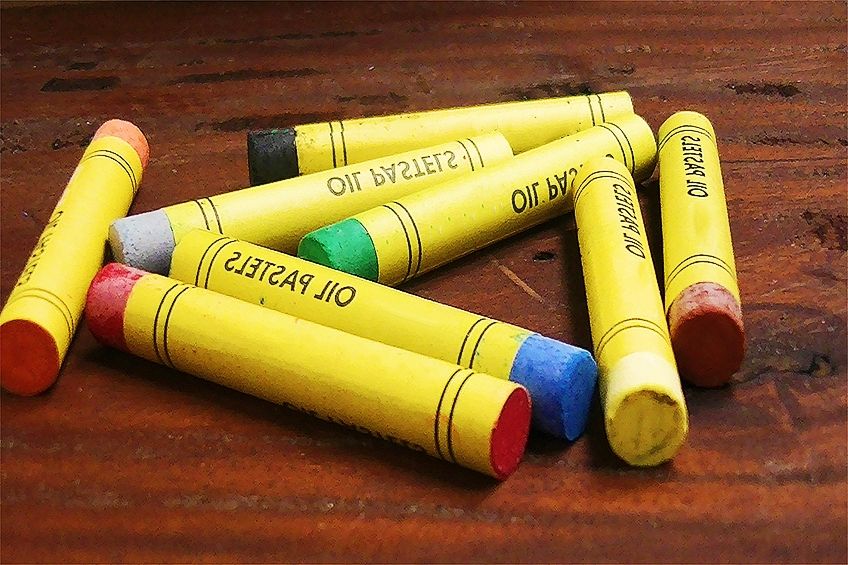
Oil pastels provide a rich hue and wax-like consistency that binds well to the canvas used. Soft pastel has a binder and pigment that creates a gentle hue on the paper used, with a smooth finish. Hard pastels, however, consist of water, pigment, and chalk, which may leave some residue. Pencil pastels offer the fine, detailed look of standard color pencils but with a gentler hand and minimal mess. Finally, PanPastel is a distinct form of pastel that can be used like paint by mixing and adding water, giving a rich paint finish.
Whichever form of pastel you choose to use is based on personal preference but for this article, we will discuss oil pastels in specific since they are universally used and loved.
What Is the Best Oil Pastel Paper?
Knowing what paper to use for oil pastels is an essential part of your creative process, as this determines how much your artwork will stand out on the foundation it’s created on. Generally, the best paper for oil pastels is considered to be linen rag paper, Ingres paper, and sanded paper. However, paper isn’t the only kind of foundation to use. Items including canvas, cardboard, plastic, glass, stone, and wood are all used to create art with oil pastels. It’s best to stick with the reliable favorites through means of paper for best results though, especially if you’re new to the world of oil pastel art. Let’s further discuss these three popular papers for oil pastels.

Linen Rag Paper for Oil Pastels
A well-loved alternative to regular paper for oil pastels is linen rag paper, made from linen material itself. Also referred to as cotton paper, this paper is made with left-over pieces of linen from places including factory shops and other places that use linen.
This type of oil pastel canvas is considered to be some of the best paper for oil pastels and is widely used by artists thanks to its super smooth texture along with its resilient nature.
Ts’ai Lun (Cai Lun) is a Chinese inventor who is believed to have been the creator of this form of paper around 2 000 years ago. The creation came as there was a need for a surface that was cheaper than the current silk surfaces being used. Dated leftover cotton rags and macerated plant fibers were used to create cotton papers as a worthy substitute. The great thing about linen rag paper is that it is typically made by hand.
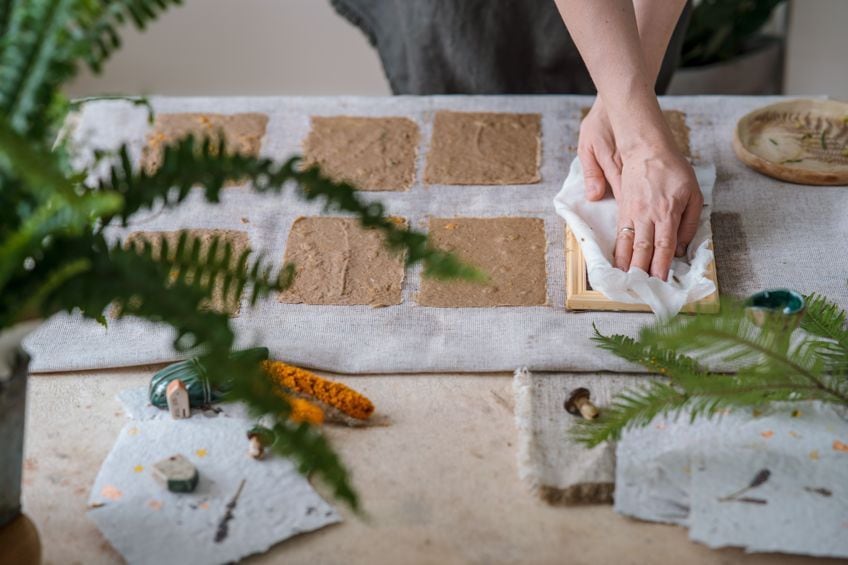
Cotton/linen rag paper held its own when the ingredients of paper changed over time when other fibers from plants were sued to make pulp and thus paper. Cotton paper is believed to be one of the oldest forms of paper, being used thousands of years before the paper was created from wood instead. Although a classic form of paper, linen rag paper is still a well-loved classic choice for artists. Let’s highlight some of the most talked-about benefits and disadvantages associated with this specific brand of paper, according to reviews by customers.
The Best Linen Rag Paper: E-TAILOR Handmade Cotton Paper
Linen rag paper is considered to be one of the top choices for oil pastel canvas. We will look at the E-TAILOR handmade cotton paper as an example of what you can expect from this type of paper when creating your oil pastel artwork. This handmade cotton paper presents oil pastel enthusiasts with a canvas that really holds its own during the creative process, being immensely practical for those new to oil pastels. Some buyers have used it to create stunning artwork on it, and some have even written their vows for their wedding day on it. The practicality of this paper makes it a big hit for artists and even romantics! The feeling of the paper itself is soft to the touch but also offers fine, gentle grooves that create a distinctive look.
- 100% handmade and traditional cotton paper loose sheets
- Made from recycled cotton, and is free from acid and chemicals
- Perfect for oil pastels, watercolor, and pen and ink artwork
This unique look is the perfect touch for those looking to use various forms of mediums on this canvas type. According to some of the reviews on this product, the paper is believed to be treated with some form of chemical that impacts absorption. The lack of adequate absorption makes it somewhat difficult to work with at times, especially if you’re looking for rich, vibrant hues to catch the attention of viewers. This may depend on which medium you’re using for the artwork though, as oil pastels may still stand out well enough as they are not messy, like regular hard pastels may be. If you’re looking for a product that can offer you a more unique look for your artworks, with a more visually appealing textured finish, this product or any form of pure cotton or linen rag paper is an ideal choice.
- High quality
- Sturdy
- Printable
- Easy to work with
- Distinctive texture
- Treated with a chemical that blocks absorption
- Breaks easily
Ingres Paper for Oil Pastels
Another awesome paper alternative for oil pastels is Ingres paper, aptly named after its inventor, Jean-Auguste-Dominique Ingres. Ingres was a French painter who designed this distinctive paper to create a more unique foundation to create artwork. The iconic French Neoclassical artist Dominique Ingres saw a gap in the market and the need for a more versatile paper for artists. From this need, a medium to light-weight paper was designed for artists who want paper that offers a unique texture to add some finishing touches to their artwork.

Named after its inventor, Ingres paper is a laid-finish paper that was created as a replica as an alternative to laid paper. The pattern of Ingres paper is laid mesh, which gives the paper a grainier texture and helps to evenly distribute mediums like oil pastels. Since its inception, Ingres paper has been frequently used by all artists, especially oil pastel artists, thanks to the practical texture that has a grip yet is still gentle. In this instance, we will weigh up the pros and cons of the HAHNEMUHLE Ingres 9-color pastel pad. Ingres paper in general has constantly popped up as a frequent favorite when it comes to what paper to use for oil pastels. It’s proven to be incredibly useful for oil pastel painters for various reasons.
The Best Ingres Paper: HAHNEMUHLE Ingres Pastel Pad
The texture is what draws oil pastel enthusiasts in since Ingres paper offers a gridline pattern and fairly distinct grooves that create more detail within your oil pastel art. According to the reviews, this paper is great for all kinds of creative artworks you may have in mind, from mediums like the oil pastels we are highlighting here, to ink mediums, and more. If you are curious about how pastel pencils work and are looking to give them a try, this paper might just be perfect for it.
- 20 sheets of 100 GSM pastel paper with two deckled edges
- Available in a range of color specifications, including bright white
- Perfect for pastel, pencil, chalk, and other dry drawing mediums
Get your creative juices flowing while experimenting with different forms of pastel mediums with this favorable Ingres paper product. If you have a myriad of creative ideas floating around and want to ensure there is enough paper, you may want to invest in a product that offers more per purchase. Considered both durable and versatile, Ingres paper is an awesome choice for anyone that wants a paper that is suitable for various forms of mediums without any worry of breakage during the creation progress.
- High quality
- Durable
- Great for ink work
- Perfect for drawing
- Limited sheets of paper
- Small-sized sheets
Sanded Paper for Oil Pastels
Another artist’s favorite is sanded paper for your canvas use in your next artwork. The sanded paper offers various levels of grit for you to help your artwork stick out from the canvas, and you can choose the amount of grit you’d like, depending on how fine you’d like it. The earliest recordings of sanded paper date back to China during the 13th century. These days, sanded pastel paper is made with more machined processes.

It was created with sand, seeds, and crushed eggshells. Not to be confused with sandpaper, sanded paper offers you the chance to use a canvas that gives you texture and tooth without being too excessive. Sanded paper’s tooth consistency is what helps artists give their artwork more depth by giving you the opportunity to add layers to the artwork. This aspect of the sanded paper is what helps it land in the top three choices of paper to use for oil pastels throughout the years.
The Best Sanded Paper: UART Sanded Pastel Paper
This oil pastel paper offers you the chance to include texture to your artwork, with however much you’d prefer for the canvas used. Sanded pastel paper is rather difficult to come by, but some deep digging on online shopping platforms such as Amazon will present you with options including UART sanded pastel paper. The reviews on this paper show that it’s a generally well-received medium. Besides being frequently rated as high quality, various reviews have pointed out just how useful this specific product is for those new to the world of pastel art.
- This pastel paper is pH-neutral and free from acid and chemicals
- A specialized coating process creates a consistent grain
- Suitable for pastels, watercolor, and other painting mediums
One user in specific discusses how they were blown away at how easy it was to create artwork with this brand’s paper in comparison to other, unsanded paper products. Other mediums like watercolor can be used too if you want a break from oil pastel creations, thanks to the versatility of this paper. Most of the negative reviews are centered around the packaging of this product, so you should always read the fine print before buying any products to ensure you are getting exactly what you are looking for and are not mistakenly misled by a product picture. Another issue users come across is that the packaging is usually done through a letter form, and is easily bent when being shipped. Bent paper is immensely frustrating to work with, leaving you irate through the creative process.
- Holds pastels well
- No puddling
- Can get wet (versatile)
- Minimal sheets in package (only 10)
It seems that each form of paper and its respective products each bring some impressive benefits to the table, with minimal downfalls. The best paper to use for your artwork seems to depend on which mediums you want to use to create artwork, and whether or not you have a “heavy hand” during the creative process. Some forms of paper are naturally more fragile than others and you may accidentally destroy your precious piece if you are not gentle enough
How Do Other Forms of Paper Compare?
Although linen rag paper, Ingres paper, and sanded paper are the three most common choices when discussing the top oil pastel canvas choices, they’re not the only options to choose from. If you want to play around with different forms of paper and see how it pans out, here are some of the choices you can try out for a diverse range of paper options.
| Paper type: | Durability | Practicality | Affordability | Texture |
| Cardboard Paper |
|
|
|
|
| Watercolor Paper |
|
|
|
|
| Mixed Media Paper |
|
|
|
|
| Sketch Paper |
|
|
|
|
| Black Paper |
|
|
|
|
Although Ingres, sanded, and pure cotton paper are considered to be the top three best papers for oil pastels, they aren’t your only options out there. The above-mentioned types of paper can also be used if you’re looking to try out different kinds and see which best suits the finish you’re going for while being easy to use in the process. As we mentioned earlier in this article, you can even use different types of canvases like wood and plastic, but those mediums are best used by more experienced pastel artists.
How to Use Oil Pastels on Paper
Now that we have answered what paper to use for oil pastels and other useful alternatives, let’s discuss the best way to make use of your oil pastels. There are a variety of methods you can use to make your pastels stand out from your chosen paper or canvas, and bring your artwork to life. These simple methods will explain how to use oil pastels on paper without the need for extensive experience or knowledge. We suggest a nicely grained paper, like the example below, in order to get the most out of your oil pastels.

The Sgraffito Method
If you want to achieve a more contrasting look as opposed to the blended look of scumbling, the sgraffito method is your best bet. Using a handful of different colors, create layers of shades; using a shade darker as you go along. After you have achieved this look, take a sharp object and create a design in the shaded area, giving a more striking, detailed look to your work of art.
The sgraffito method helps you to generate focus on an object while creating a bright hue that captivates all those who will come across your artwork.
The Scumbling Method
Perhaps one of the easiest methods to use, this method involves you making use of controlled strokes that resemble scribbles on the surface. Two or more colors bring out this method, for blending and some contrasting reasons. Lightly ‘scribble’ with one color, followed by another. Scribble the two over one another at some point to create a more textured look to your artwork. Although basic, this method is arguably the easiest way to create contrast without following an excessively-detailed manual.

The Masking Method
Speaking of creating designs, the masking method is an ideal way to achieve your desired shapes and concepts. Use masking tape to place over whichever areas you don’t want to have color on. You can get creative and design whichever imagery or shapes you wish.
Blend the oil pastels around it and finally, remove the tape once done for more detail included in your artwork.
The Oil Blending Method
If you want an easy, fast-tracked way to blend oil pastels perfectly, you can pre-blend them in the oil itself before creating your artwork. There are two ways you can do this. First, you can either place whichever colors you wish to use on a palette or use a Q-tip dipped in oil to blend colors before applying it to the canvas. Or, you can use the different colors on the canvas itself and blend them with the Q-tip method.

The Overlaying Method
Many oil pastel artists use the overlaying method to create the exact shade they’re looking for with oil pastels. Begin by using one color to layer the artwork, preferably using a primary color for easy blending. Add extra layers, using different colors each time. You can stop once you have achieved your desired shade, and using a light or heavy hand may also assist you when looking for different finishes.
These methods are tried and tested to give you an oil pastel artwork that stands out from the rest, varying in difficulty yet still being fairly simple to achieve for oil pastel beginners.
Tips and Tricks When Using Oil Pastels
Now that you know how to use oil pastels on paper effectively, here are some final tips and tricks for creating a breathtaking work of oil pastel art, without any potential hiccups commonly experienced:
- Use the easiest mediums of pastels first for practice. Although you have a variety of pastel forms you can use, get the hand of the easier ones like pencil and oil pastels first to avoid mishaps.
- Be mindful of the kind of paper you choose. Before venturing out into different papers, stick with the ones known to be ideal for oil pastels, like sanded paper.
- Play around with different mediums, methods, and papers before creating your vision. If you go straight into it without experience, you may accidentally destroy your artwork from a lack of knowledge.

These simple yet important tips will help you along the way when creating your next oil pastel artwork that you can be proud of. If you’re new to using oil pastels, it’s essential that you practice first with easier paper before going onto the more challenging ones, since you want to avoid any mishaps along the way.
Frequently Asked Questions
Can I Use Standard Paper for Oil Pastels?
As highlighted earlier, there are so many different kinds of paper for you to use and experiment with to find one that suits your needs. The type of paper you choose to go with will depend on what kind of finish you’re going for, and how experienced you are with oil pastels. Beginners are encouraged to use mixed media or cardboard paper to get used to your creating skills, while those looking for more of a challenge can try sketch paper or black paper to make any neon pastels stand out.
Which Pastels Are the Easiest to Use?
Now that you know which paper is the easiest to play around with, let’s discuss which pastels, in particular, are the best for beginners. Oil pastels are a great pastel medium thanks to their rich hue and practical nature. However, if you’re looking for something even easier to use, pastel pencils are your best choice. The most challenging pastels are considered chalk pastels and watercolor pastels, as this takes more precision and extra attention to detail.
In 2005, Charlene completed her wellness degrees in therapeutic aromatherapy and reflexology at the International School of Reflexology and Meridian Therapy. She worked for a company offering corporate wellness programs for several years before opening her own therapy practice. In 2015, she was asked by a digital marketer friend to join her company as a content creator, and it was here that she discovered her enthusiasm for writing. Since entering the world of content creation, she has gained a lot of experience over the years writing about various topics such as beauty, health, wellness, travel, crafting, and much more. Due to various circumstances, she had to give up her therapy practice and now works as a freelance writer. Since she is a very creative person and as a balance to writing likes to be active in various areas of art and crafts, the activity at acrylgiessen.com is perfect for her to contribute their knowledge and experience in various creative topics.
Learn more about Charlene Lewis and about us.







